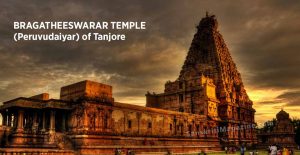
Trip to Panna Meena Ka Kund- Mysterious stepwell in Jaipur
History : Situated near Anokhi Museum at Jaipur-Amer road, this beautiful place was constructed during sixteenth century. The place was mainly utilized as a place

History : Situated near Anokhi Museum at Jaipur-Amer road, this beautiful place was constructed during sixteenth century. The place was mainly utilized as a place

“The 60-day annual yatra to the shrine of Amarnath in south Kashmir Himalayas will commence on June 28 and the yatra will be longer by

Bragatheeswarar (Peruvudaiyar) Temple, also known as Big Temple. “In the twenty-fifth year of Raja raja Cholan (A.D 1009-10) on the 257th day of the year

Dwarka is one of the four shaktipiths (also referred as Shardapiths) established by Adi Shankaracharya. Others are Jyotishpith in the North, Shringeri pith in the

The Bucesvara temple (also spelt Bucheshwara or Bucheshvara) is a simple yet elegant specimen of 12th century of Hoysala architecture. It is located in the

~ By Shipraprasadini, Contributing Writer, Mumbai I have set out to cartograph the footsteps of my ancestors in the southern peninsula of India in a

Hanuman Jayanti, the auspicious celebration of the birth of Lord Hanuman, is more than a

Uncovering the Power and Symbolism Behind a Beloved Name When we chant “Jai Hanuman!” we

Tomorrow, across India and beyond, millions will celebrate Hanuman Jayanti, the divine birth anniversary of

Celebrate the final day of Chaitra Navratri 2025 by honoring Maa Siddhidatri, the bestower of divine powers and wisdom. Discover her sacred story, powerful symbolism, and simple ways to involve the whole family in her worship.

On Day 8 of Chaitra Navratri 2025, worship Maa Mahagauri, the goddess of purity and peace. Discover her gentle story, significance, and how families can honor her with meaningful rituals and joyful reflection.

Sanskriti comes from the Sanskrit root “kr” which means to do or to make prefix “sam” is applied before it to convey a sense of embellishment. It means actions done for the holistic refinement and perfection all the potentialities within a human being.
Copyright © 2024. Sanskriti Magazine
Copyright © 2024. All rights reserved.